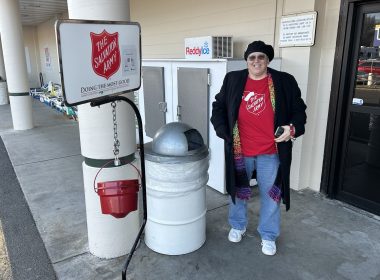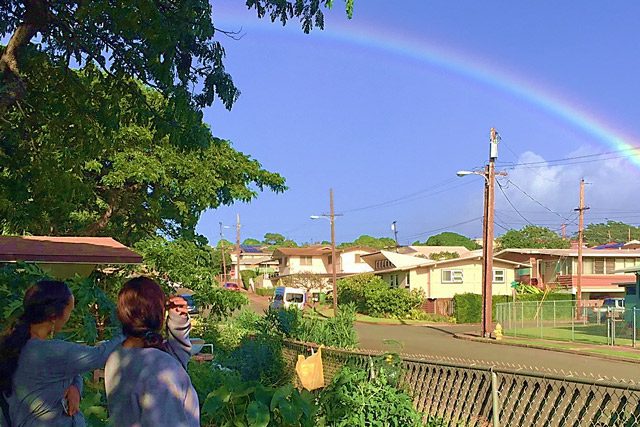By Karen Gleason –
The Salvation Army Family Treatment Services (FTS) in Honolulu recently received a $278,212 grant from the Office of Hawaiian Affairs for its Ola Kino Maika’i 2.0 project, which incorporates cultural practices into the continuum of care for Hawaiian women in recovery. The goal is that the women’s resolve to maintain sobriety will be strengthened by reconnecting with their native culture.
The original Ola Kino Maika’i project began in 2015 and ran for two consecutive two-year sessions. It aimed to help Hawaiians in treatment combat chronic illness and obesity. The new, expanded project begins in October to address substance abuse through Hawaiian culture until 2022.
“We provide evidence-based practices for the treatment of substance use disorders, which are gender responsive for all women including our specialized population of pregnant and parenting women with dependent children,” said Melanie Boehm, Executive Director of Addiction Treatment Services and Family Treatment Services.
FTS is Hawaii’s sole provider of residential substance abuse treatment services for women with children. Kate Kahoano, Cultural Integration Coordinator, said she makes a great effort to include Hawaiian values and traditions through the project, which includes culture classes, hula and ho’oulu aina (to grow and cultivate land).
“Kate expertly guides our culturally responsive services in partnership with cultural practitioners who work closely with us for the best and most effective care for our women and their families,” Boehm said.
The project emerged from a study of the treatment challenges facing native Hawaiians, a population that ranks high in substance use statistics, according to Kahoano.
Previous studies revealed that native Hawaiians viewed outsiders’ efforts to instill behavioral change as “infringements of their traditions,” Kahoano said. These traditions value balance, including the individual’s integration with nature and the spiritual world, and her connection with family and community.
“By making the identity of the person a priority, the agency and treatment assess the culture and values of that person,” Kahoano said.
With this in mind, the new project seeks to meet the needs of FTS’s native Hawaiian clientele with expanded program activities. The culture class—“What’s culture got to do with it?”—explores how culture helps individuals connect with the strengths of one’s people. Using native Hawaiian values, clients practice reconnecting with family and honoring their elders and ancestors, and they learn concepts including lokahi (harmony and balance), kuleana (responsibility and purpose) and malama ‘aina (to care for the land).
“In learning about the culture of Hawaii, it also helps one learn any culture and see all the different parts of our lives that are connected to our community, resources and help, such as understanding the culture of motherhood, the culture of recovery, and so on,” Kahoano said.
Hula instruction engages clients in body movement and healthy exercise. As a form of Hawaiian storytelling, it illustrates important Hawaiian proverbs and life lessons. Hula also involves hands-on learning and it can potentially reconnect a person with practices from their youth, calling up positive memories.
When women practice caring for the land by working in a garden, they are again engaging in healthy exercise, as well as nurturing something, which can lead to qualities including patience, diligence, hope and faith. Participants learn about Hawaiian plants and medicines and about the traditional Hawaiian deities associated with the plants. Finally, the women eat healthy, homegrown foods and create traditional dishes.
“I love everything Alika [farmer and cultural practitioner] has taught us,” said one client. “In the time we’ve been here the garden has grown so much. What used to be an empty field became such an amazing place for us to put our love and work into.”
These cultural practices can make a significant difference in substance abuse recovery.
“There is an increase in self-worth, due to having opportunities to engage in practices where they can see the impact of their learning—memorizing an entire hula, eating a salad grown from their garden, remembering and retelling important Hawaiian stories to their children,” Kahoano said.
Clients have an improved chance at lasting sobriety when they are considered within the context of their environment and culture, Kahoano said, because they feel that they “belong” and that what they are learning reflects their values and hopes.
“Family and client engagement, classes and concepts are rooted in the Hawaiian value of ‘ohana—family,” Kahoano said. “The philosophy behind the project is that once the gap between cultural values is bridged—through treatment—the clients will be more capable to refuse the temptation of substance abuse in the future because they will be more in tune with themselves and aspects of their own culture.”












